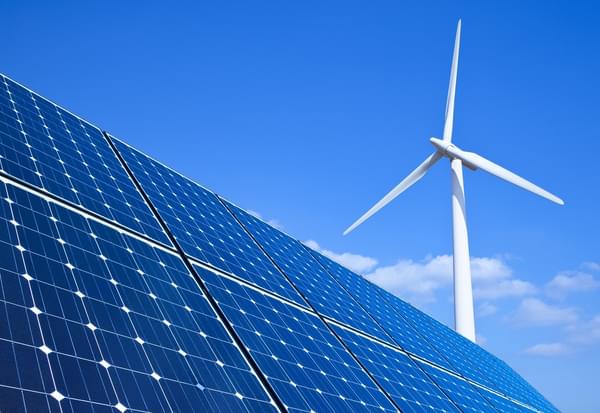Back to News
Renewables industry primed for major roll-out of onshore wind schemes
Tom Shilton \ 16th Jul 2024
Policy announcements came thick and fast within hours of the new UK government taking office. Lifting the de facto ban on onshore wind development in England was one of the biggest.
It represents a huge shot in the arm for the renewable energy sector, and has the potential to make a significant contribution to the UK's energy security, decarbonisation and net zero targets. The government's goal is to double onshore wind capacity to 30GW by 2030.
Why onshore wind matters
"Adding wind power to the mix of available renewable technologies is powerful because it has a much higher generation capacity factor than solar and provides a more consistent year-round output," says Tom Shilton, director, and renewable energy lead for Hydrock, now Stantec.
"Solar schemes are great, but you'll get more hours per year of capacity generation from wind turbines and this matters for all interested stakeholders," he adds.
Consistent energy generation is critical for behind-the-meter schemes supplying sites where 24/7 access to power is key, for example logistics developments, data centres and R&D facilities. It's equally important to renewable energy developers focused on front-of-the-meter schemes, because the more energy generated, the higher the revenue returns in supplying clean energy to the grid and private customers.
Grid capacity remains the biggest thorn
The ability of the grid network to absorb the generation of clean energy will be the biggest challenge facing this opportunity to re-embrace onshore wind.
Quoted in New Civil Engineer, Sophie Lee, transmission and distribution lead for Stantec, was enthusiastic for the decision but stressed: "The rapid requirement for new grid connections across the country is arguably one of the most significant hurdles."
Sophie continued: "We must ensure our energy network has the capacity for huge increases in power from these new sources. Not only from new onshore wind developments, but from other green energy generation sources as well.
“We need the overhead lines, cable routes, substations, and ancillary infrastructure to pass through the planning and consenting process at a supportive rate. There’s no point being on a new train if the old tracks can’t cope."
Technical due diligence key to planning approvals
Local opposition to onshore wind schemes might no longer be a roadblock, but a range of feasibility and viability studies are still required to demonstrate a scheme is appropriate for a specific location.
"There's still a duty of care to ensure that an onshore wind scheme is sited in the right place," says Tom.
"There are some very specific studies required which need to be powered back up to support the planning submission of the multitude of onshore wind schemes that will now come forward.
"Noise, shadow flicker assessments for the turning blades, ecology, and swept path analysis that confirms that the access route to site is clear for the delivery of the turbines. These are just four of the key studies and assessments that developers and investors now need to resource."
As with any renewable energy scheme, ground conditions, landscaping, civil infrastructure and services will all be key to design, planning and ultimately construction.
"There is understandable excitement about this opportunity in the renewable mix" says Tom, "but it's important, as with any technology, to conduct financial appraisals, and work thoroughly through all the aspects of potential environmental impact to demonstrate a viable scheme that will achieve planning consent.
Reforms to the grid connection queue due from January 2025 will also put greater emphasis on meeting these development milestones, including planning approval, for a project to maintain its connection queue position. The 'first ready, first connected' approach will prioritise projects that are actively progressing, as opposed to those simply 'sitting on' capacity.
"The world has moved on since onshore wind was last in vogue. Technological improvements mean fewer turbines are needed to generate the same levels of power, and public awareness is greater on why renewable technology is important to us, in terms of energy security, energy costs, and carbon emissions. This really does make it a new start for this specific part of the renewable energy sector."
Want to learn more about onshore wind development? Download our factsheet here.











